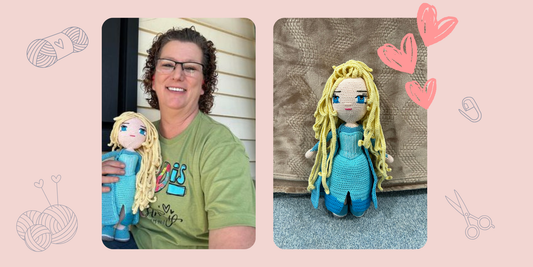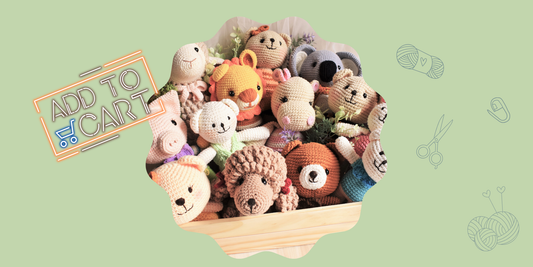As with any new skill, teaching kids to crochet can be extremely rewarding. Whether you’re teaching your own children or teaching a class for other people’s children, watching them learn and progress in a new skill is satisfying. With every child you teach, you are sharing your own sense of creativity and skill by sharing with others. This article will tell you about why you should teach children to crochet, tips for being successful, and projects to use while they are learning.
Why Teaching Kids to Crochet is a Great Idea
- Teaching kids to crochet gives them a creative way to express themselves,
- Helps keep them busy when they’re bored,
- The skills needed to create a project – like reading a pattern, following directions, picking out the correct supplies, etc. – all translate to other parts of life,
- Crochet can be a calming activity that reduces anxiety and stress,
- Learning a new skill can provide children a sense of accomplishment and boost their self-esteem.
Tips for Teaching Kids to Crochet
- Start small. Use small words, even if they’re not the 100% correct terms, and start with small projects.
- Think big. Using bigger hooks and chunkier yarn makes the stitches larger. This makes it easier to see where to put the hook and helps you spot trouble areas sooner.
- Teach one stitch at a time. They should start with the chain stitch and be confident with that before moving on to a single crochet, and then a double crochet. These three stitches will form the basis for all their earliest projects, but they should only learn one at a time.
- Repetition is the key. The more they practice their new craft, the better they’ll get. They should start by making one stitch over and over again until you’re confident that they’ve got it mastered.
- Give lots of specific praise and encouragement. Praise specific things related to the skill you're teaching – like “I like how your chains are all the same size” when you’re learning about tension and the chain stitch. Encouragement may be necessary when they’re learning something new, especially when it’s puzzling for them at first.
Projects to Use When Teaching Kids to Crochet
- Braided Chain Projects – Since repetition is the key, and you’ll be teaching children to crochet the chain stitch first, have them make a lot of chains. Teach them how to start, tension, and how to finish. Then have them do it many times. Using a variegated chunky yarn might help provide some variety with these types of projects. Have them make several that are all the same length and show them how to braid (bonus skill!). With these braided chains, you can make key chains, bracelets, necklaces, jump ropes and dog leashes. Having actual usable projects completed will help add to their sense of accomplishment and help keep them engaged.
- Single Crochet projects – Single crochet will be the stitch they learn after chaining, but you still want to keep the projects small. Think doll blankets and washcloths. Once they have the stitch mastered and they’re going a little faster, they can do large (but still pretty small) projects like scarves and small pillows. You could also have them do many small squares or rectangles and teach them to sew them together with a yarn needle (bonus skill!) to make larger items like pillow shams and throws.
- Double Crochet projects – Once they have chain stitch and single crochet mastered, it’s time to jump into double crochet. Again, start with small projects, like washcloths and doll blankets. This is a great time to also teach how to work in the round (bonus skill!) and switch colors (bonus skill 2!) so they can do flowers, coasters, granny squares and beanie hats.
- Here’s a list of small projects for children to master (in order of easiest to hardest):
o Braided chain bracelet,
o Braided chain necklace,
o Jump rope,
o Dog leash and collar,
o Doll blanket,
o Washcloth,
o Doll pillow,
o Scarf,
o Flowers,
o Coaster,
o Granny squares,
o Beanie Hat,
o Throw blanket.
There are some great reasons for teaching children any new skill and some tips that can help you be successful. This article has given you some helpful tips for making it easier as well as a variety of fun projects to use when teaching kids to crochet.

















